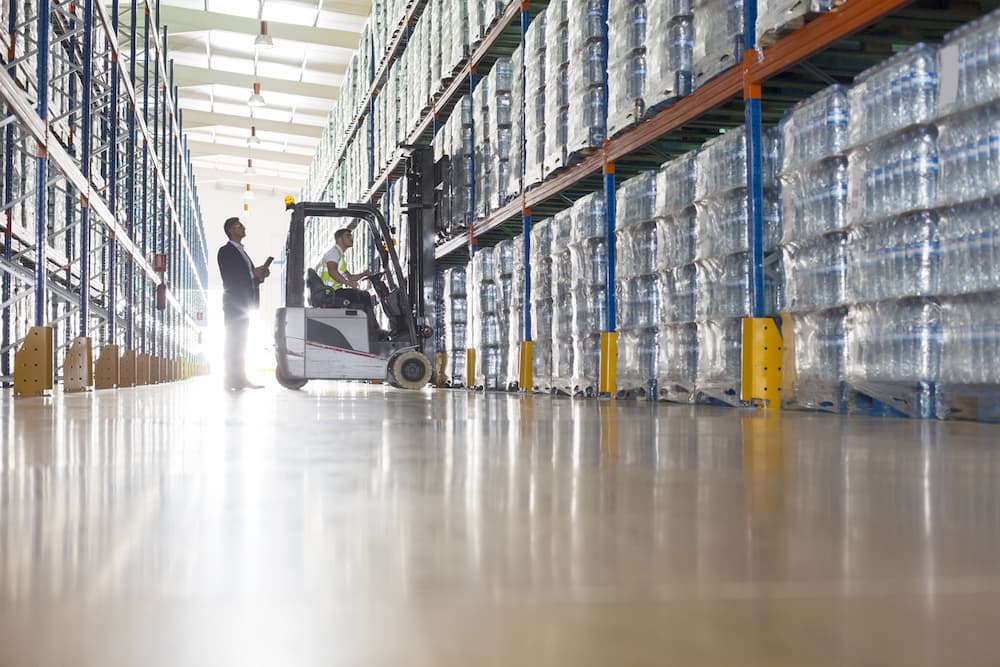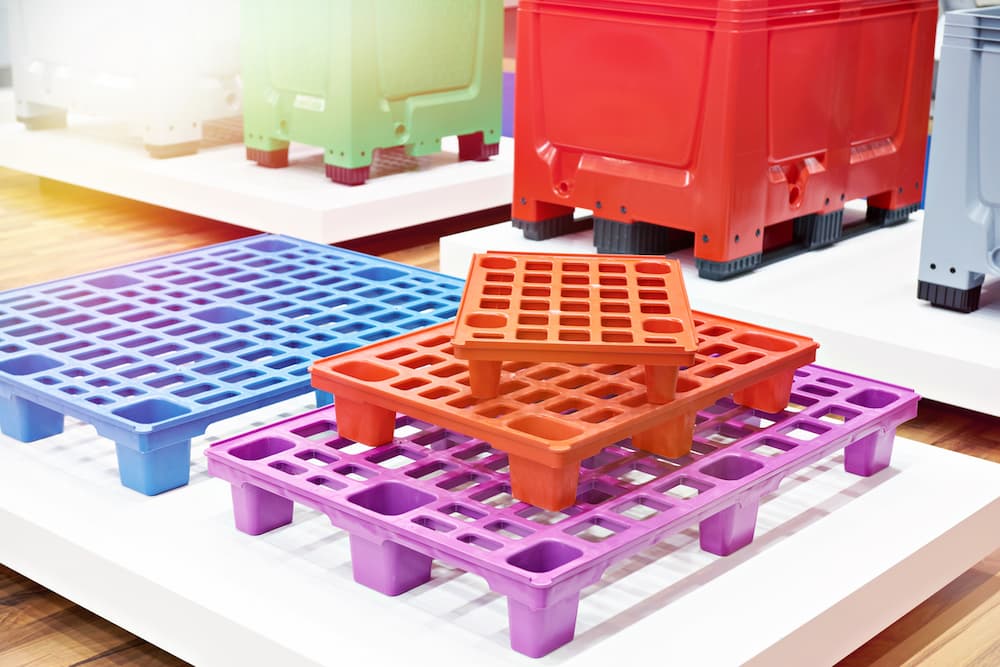Pallets are an essential tool for many businesses regardless of your focus. By removing your stock off the floor, you not only provide long-lasting protection but you significantly increase productivity for stock transportation.
A collection of plastic pallets will enable warehouse managers to organise and optimise their storage spaces, but what about storing the pallets themselves? Unused pallets can get in the way of daily operations and be hazardous in a busy environment. Knowing how best to store your unused pallets is vital, and the best way is with a stacking pattern.

Different Pallet Stacking Methods
There are several ways to approach plastic pallet storage. When you own only a few pallets, you can consider lining them up against a wall, but this can quickly escalate into a hazard as more pallets are added. Here are some better choices commonly applied for business storage.
Stackable Plastic Pallets
This is the most common solution for pallet storage. Your plastic pallets are stored neatly on top of each other to limit the footprint of the pallet within your storage space. Depending on the number of pallets you have, you’ll need to set safety limits by restricting the height of any one stack. This process is particularly effective with nesting pallet designs that can reduce their size by nesting their support legs.
Rackable Plastic Pallets
Some more extensive facilities will rack their plastic pallets onto industrial-grade shelving units. For example, collections of euro-stacking containers will be wrapped for delivery on a rackable pallet. This provides the benefit of pre-loading a set number of products onto a pallet ahead of time so they can be transferred quickly. This works well for bulk storage facilities with predictable, repeated orders to fulfil.

Pallet Stacking Safety
Avoid stacking pallets too high. The UK government has guidelines that assist with pallet safety in the workplace. Alongside many other pieces of advice, they state that when deciding the safe stacking height, business owners should take into account the following:
- Pallet information from the manufacturer concerns the amount of weight the pallets you use can manage. The relevant safe-loading information will use terminology defined by BS EN ISO 445.
- The local conditions of where you store or stack your pallets and the patterns you plan to use. Areas with humidity or condensation will affect the stability of your stacked pallets.
Generally, the stack height should be no taller than six times the narrowest dimension of the bottom pallet, which will be the height of the pallet when lying horizontally.
Pallets should never be stacked side up. This creates a significant instability that will be a hazard to your staff. Pallets should always be stacked horizontally. Although side-up pallets can be lined up against a wall, this is less efficient than stacking horizontally.
The size of the pallets should be consistent throughout the stack. Mixing pallets within a single stack will create areas of instability and increase the likelihood that the collection will fall. Additionally, whatever size pallet you need will likely be low down in the stack, forcing you to remove the higher ones before reaching the one you want.
Regardless of the height, stacked pallets should be checked regularly for stability and the integrity of the individual pallets. Any damaged units should be replaced to maintain the stack, and even small piles can cause a lot of harm if they fall on an employee’s foot.
A good rule of thumb for pallet stacking is to limit the height to just below an average person’s shoulder height. For example, this could be just under 5 feet (or roughly 140-150cm).

Benefits of Plastic Pallets
Unfortunately, wooden pallets have several limitations, making them the worse choice for stacking. The durability of wooden pallets will decrease over time regardless of any extra damage they might endure.
For several reasons, heavy-duty plastic pallets are a superior choice for safe, efficient operations. The most well-known advantage is the increased durability of the plastic material used. The accumulation of moisture and inherent physical resistance makes our recycled plastic pallets significantly more durable than wooden ones.
Our closed plastic pallets come in various colours to help business owners with their organisation. Although both our closed and open plastic pallets are manufactured as rotationally moulded pallets, they are designed as smooth, hygienic plastic storage solutions that have been developed in food-grade, medium-density polyethene (MDPE).
Plastic pallets significantly help the food industry over wooden ones. This is because wood can splinter when damaged and leave a mess on the floor. Additionally, wood is more challenging to keep sterile as bacteria and dirt can get lodged within the wood grain. However, plastic heavy-duty dollies and pallets are popular in food manufacturing and hospitality as they won’t chip and can be sterilised easily.
Alison Handling is the UK’s most prominent plastic storage box and pallet supplier. An experienced independent stockist of reusable and fully recyclable plastic storage solutions, we have something to improve any business’s storage space.





